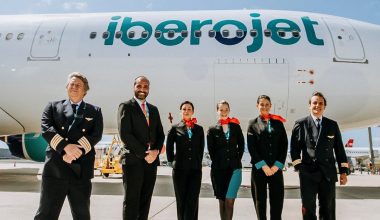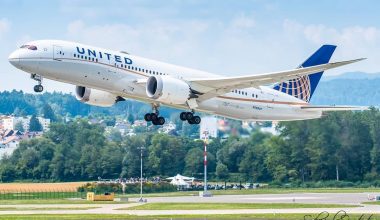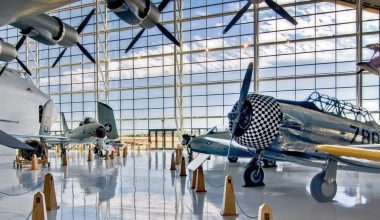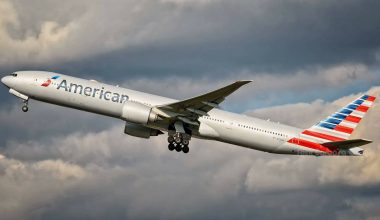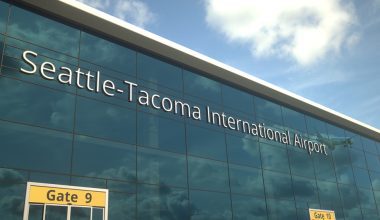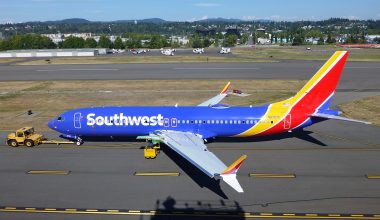Aviation, once considered to be a domain of a select few, is now a part of a hum-drum daily routine. Scientists for years have fully understood the concept and physics behind flight which eluded humans for millennia, and they are constantly searching for new ways to push flight to the limits. Flying is the greatest privilege, thanks to the Wright Brothers of the USA, who kickstarted the world’s first successful motor-operated airplane. The triumph of science is evident in the gradual and advanced development of aviation and it never fails to enthrall us. We have collected the 20 most interesting facts about aviation that will blow your mind and fuel your enthusiasm for aviation.
20 most interesting facts about aviation
1. First powered, controlled airplane flight
The year 1903 marks one of the most innovative historical moments of aviation when the American aviation pioneers Orville Wright and Wilbur Wright made the first successful powered, sustained, controlled heavier-than-air aircraft flight. Although the traces of the existence of aircraft can be found in ancient history millenniums back, it was Wright Brothers who built and flew the first fully practical airplane on December 17, 1903. They opened the skies for innovators of the aviation industry, and aviation was never the same again.

2. The longest-standing airline in the world
Airlines form a significant portion of aviation, and the world’s first carrier that came into revenue operation is DELAG of Germany. Founded on November 16, 1909, DELAG became the foremost airline to operate an aircraft in revenue service. Every year several airlines come and disappear from the aviation landscape, but the longest-standing airlines in the world are KLM Royal Dutch Airlines (estd. 1919), SCATDTA (1919), Qantas Airways (1920), Aeroflot-Russian Airlines (19230, Czech Airlines (1923), Finnair (1923), Tajik Air (1924), Delta Air Lines (1925), etc.

3. Greatest selling commercial jets
Another most interesting fact about aviation concerns aircraft sales. In the aircraft market, Boeing and Airbus enjoy a considerable degree of duopoly as their increasingly widespread narrowbody jets are ubiquitous and have reached far corners of the world. Airbus A320 and Boeing 737 are the greatest selling commercial jets in the history of aviation that has crossed 15000+orders each till now.

4. Daily flights and number of passengers taking to skies
Aviation has given wings to human beings to experience the pleasure of flying and celebrate magical moments in the sky. Prior to the outbreak of the coronavirus pandemic, there was an average of 115,000 commercial flights every day around the world. In 2019, around 4.5 billion people took to the skies worldwide with a record of 42 million flights. If you are wondering how many planes might be in the air right now, an average of around 10,000 planes is flying in the sky, carrying at least a million passengers at any one time.

5. The world’s busiest and largest airport
Among the 20 most interesting facts about aviation comes the world’s busiest and largest airport. Airports are aerial gateways to our favorite destinations and a second home for avid travelers. In terms of land area, Saudi Arabia’s King Fahd International Airport is the world’s largest airport, spread across 776 square kilometers and serving the entire Eastern Province of the country. In terms of passenger traffic, Hartsfield-Jackson Atlanta International Airport holds the title of the world’s busiest airport, which handles more than 75 million passenger movements every year. Overall, airports in the US account for the top busiest airports, followed by those in China, India, Turkey, Mexico, etc.

For further information, Juancho Yrausquin Airport, located on the Dutch Caribbean island of Saba, is regarded as the smallest airport in the world as it hosts the world’s shortest commercial runway measuring just 0.2 miles long.
6. Airplane designs evolve over time
Just as flying animals, airplane designs are constantly evolving over time. Each aircraft model is different and possesses its own set of specific capabilities and features. Since the modern pioneer flight in 1903, aircraft designs have come a long way, and they are becoming more reliable, powerful, and efficient than ever. Aviation is at the forefront of technological advancements, with various airplane models coming over time, from jumbo jets to light passenger planes, cargo planes, military jets, strategic reconnaissance surveillance aircraft, etc.
7. Largest jets ever in the history of mankind
Aircraft are marvels of engineering, but some aircraft are more special than others in light of their aerodynamic capacity, weight, volume, wingspan, etc. An-225 Mriya, the strategic airlift cargo aircraft and the epitome of Ukrainian pride, was the heaviest and the largest airplane ever built that could carry a payload of up to 250 tons. Sadly, the six-engine behemoth resides only in memory now as it was destroyed in the Russia-Ukraine conflict.
Airbus A380 is the largest double-decker passenger jet ever built that has the highest recorded passenger capacity of 615 in a two-class layout.
8. Fear of flight is present in more than 80% of the population
While flying gives us a sense of freedom and an opportunity to venture into the wild blue yonder, the fear of flight is present in more than 80% of the population. The fear of height (acrophobia), fear of flying (aerophobia), fear of crashes, etc. make fliers anxious during air travel. For your peace of mind, air transport is one of the safest modes of transport, resulting in 0.07 deaths for every 1 billion miles traveled.
9. The science behind flight
The marvel of flight is astonishing and what’s even more astonishing is the science behind it. Aircraft achieve flight by using four forces: lift( the force created by wings to hold aircraft in the air), drag (acts opposite to the direction of motion), thrust (force created by a jet engine or propeller to move aircraft in direction of motion), and weight (gravitational force).

10. Air transport accounts for 5% of total travel demand
Despite the sheer amount of flights taking off and landing every day, air transport accounts for only 5% of total travel demand around the globe. Only 5% of the world’s population has ever flown in an aircraft, and if you are one of them- Cheers for the flying experience.
11. Pilots won’t eat the same meal

One of the most interesting facts about aviation is that most pilots and co-pilots won’t eat the same meals. While FAA does not mandate this practice, most airlines require that pilots and co-pilots eat different meals during flights. Why? The reason is simple. If something goes wrong with one meal and one of the pilots falls sick (food poisoning), the other pilot can step in and assure the safety of the passengers onboard.
12. There are hidden-from-view rooms in an aircraft for pilots and flight attendants
No matter how hard flight crews try to avoid fatigue, there’s a point when they need their own downtime and break from service, esp. on long-haul flights. There are hidden-from-view rooms in the back of aircraft for pilots and cabin crew to let them take breaks and sleep.

13. Aviation alphabet
The world of flying is interesting, and if it’s not already obvious, aviation workers use aviation alphabets to share information quickly and accurately and avoid issues that may arise due to misunderstandings of messages. The same 26 English letters have corresponding words to sound different from each other. B or C may sound alike, but their code words ‘Bravo’ and ‘Charlie’ sound different, so it avoids misinterpretation of messages and increases aviation safety.

14. Air Marshals on commercial flights
Air Marshals are the government’s first defense against any crime in the skies who work in covert positions and maintain social confidentiality of their occupation. They use their sixth sense to figure out normal passenger activity and criminal behavior and protect the flying public against terrorist attacks, aircraft hijacking, etc. The plane you are traveling in might have some air marshals, but you won’t identify them.
15. Black box is not so black

In an airplane, there’s a mysterious-sound piece of equipment that records flight data and makes it accessible to authorities when needed. Opposite to popular belief, the black box is not black at all-it’s painted a bright orange.
16. The fastest plane in the world
Another interesting fact about aviation is that there are a handful of fighter jets that have lightning-fast speed and can disappear in a blink of an eye. Lockheed SR-71 Blackbird, which outruns a missile, MiG-31 Foxhound cruising at the supersonic speed of over 2.8, and Mach 3+Lockheed YF-12 are some of the fastest fighter jets in the world. In commercial operations, Concorde is the fastest passenger jet, with a top speed of 1,354 mph.

17. Cockpit doors are open during boarding but remain locked during flight

Cockpit doors are open during boarding to allow the captain to monitor the procedure but remain locked during the flight to prevent unwanted entry.
18. Food tastes different on planes due to reduced taste sensitivity

Airplane foods aren’t ‘WOW’ because low moisture and air movement above 30,000 feet affect our taste buds and reduce our odor and taste sensitivity.
19. The air in an airplane cabin is drier than Sahara
The pressurized air in the airplane cabin has an average of 12% humidity, below the Sahara Desert’s humidity.
20. Airline without passenger fatalities

Since its inception in 1929, Hawaiian Airlines has never had any fatality. Qantas, the flag carrier of Australia, also has a perfect safety record, with no fatal accidents involving any of its commercial aircraft in the jet era.

